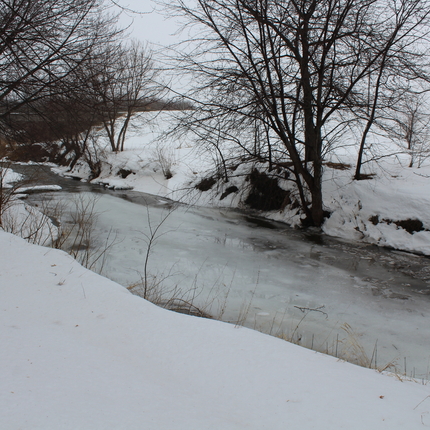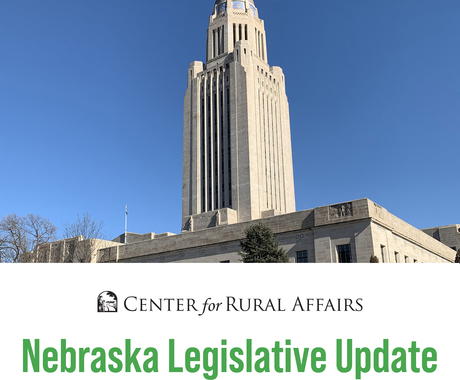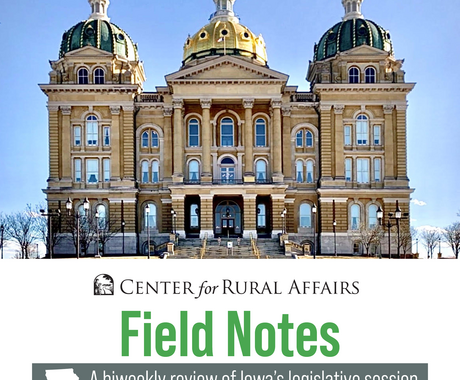By Cody Smith, former staff member
Flowing Forward is a multi-part series that investigates the causes of, analyzes the challenges facing ongoing efforts, and provides recommendations for addressing Iowa’s water quality issues. The series includes three fact sheets that analyze the historical context and current administrative framework, as well as provide a road map for addressing this complex challenge. The fact sheets are based on the report, “Flowing Forward: Planning Iowa’s Water Quality Future,” written by Katie Rock which will be released soon.
Over the last 83 years, much has changed in Iowa. The state has weathered a Great Recession, undergone significant demographic shifts, and grappled with a changing agricultural economy. However, one discussion has remained a hot topic for what is now the better part of a century—water quality. For many decades, Iowans have worked together to identify solutions in improving water quality statewide. As the state continues to write its story on water quality, taking a look back may offer valuable insight as Iowa continues flowing forward in its mission to promote better water quality.
A recently published fact sheet from the Center for Rural Affairs, “A Look at Iowa’s Water History,” provides a comprehensive look at the state’s complicated past with water stewardship.
A shift in dialogue
As the state has wrestled with this complex policy challenge, the dialogue has shifted many times. From the creation of the Water Resources Committee under the Iowa State Planning Board in 1936, to the signing of water quality legislation by Iowa Gov. Kim Reynolds in 2018, the conversation has shifted to water quality and soil health and away from water use and drainage. Increasingly, soil health is seen as a way to improve the productivity and sustainability of Iowa farms, while reducing their impact on water quality.
The role of political leadership
Since 1936, Iowa has had 18 different governors, including the current one. Throughout their terms, one thing has been proven again and again—executive leadership on water quality has helped spawn action. For example, in 2003, Gov. Tom Vilsack hosted an Iowa Water Summit that facilitated a list of recommendations to the Legislature. Three years later, the Iowa General Assembly followed these recommendations by creating the Watershed Quality Planning Task Force in 2006.
A key piece of history in this conversation was the Legislature’s 1982 decision to task the Water, Air, and Waste Management Commission (which would later merge with three other government entities to create the Iowa Department of Natural Resources) to develop a state water plan. The State Water Plan was unveiled to the Legislature in 1985, providing a description of water availability and quality, estimates for future water usage, a water allocation plan, and implementation proposals. The plan helped establish a framework for many water policy discussions for years to come.
Extreme weather infiltrates the conversation
In addition to political leadership and its influence on state policy, uncontrollable events, like extreme weather, have also played a significant role in the water quality conversation. In 2008, major flooding and tornadoes caused $848 million in damage to communities across the state. This major natural disaster led to more urgency in water policy discussions at the state capitol. The magnitude of the damage helped usher along the creation of the Water Resources Coordinating Council, which was a recommendation provided by the Watershed Quality Planning Task Force the previous year.
The creation of the Water Resources Coordinating Council in 2009 led to another list of recommendations that was presented to the Iowa Legislature in the same year. This time, the recommendations were heeded by state lawmakers and Watershed Management Authorities, and the Watershed Planning Advisory Council was established during the following legislative session in 2010. This helped install a watershed focus on Iowa’s statewide efforts.
Political pressure helps form strategy
A major milestone in Iowa’s water quality history was the creation of the Iowa Nutrient Reduction Strategy in 2013. A collaboration between Iowa State University, the Iowa Department of Agriculture and Land Stewardship, and the Iowa Department of Natural Resources, the strategy set a goal of reducing nitrogen and phosphorus in the state’s rivers by 45 percent.
The development of the strategy was facilitated by 2011 Environmental Protection Agency guidance that encouraged states in the Mississippi River watershed to create more robust nutrient reduction strategies. A year before the guidance was issued, Iowa voters added political pressure by passing a ballot measure to establish the Natural Resources and Outdoor Recreation Trust Fund, with 63 percent voting in favor of the initiative.
The latest chapter
In the last two years, legislative action has been cause for optimism. Much like the leadership Gov. Vilsack showed in 2003, current Gov. Reynolds signed her first piece of legislation, Senate File 512, which is a package that provides $282 million for water quality projects over the next 12 years. In addition, state leaders celebrated the five-year anniversary of the Iowa Nutrient Reduction Strategy with a progress report in January 2018.
While this discussion has been progressing for the last 83 years and implementation of water quality policy has continued, there are many challenges that remain. Popular Science magazine has ranked water quality as Iowa’s greatest science policy challenge. In addition, the $282 million package signed last year falls far short of the estimated $4 to $6 billion total cost of reaching the goals of the Iowa Nutrient Reduction Strategy. This has led many to criticize the lack of conversation at the capitol this year, saying lawmakers are pretending this problem is solved.
Regardless of what water policy is or is not passed, if history is any indicator, water quality will continue to be a part of the political debate in Iowa for many years to come.




